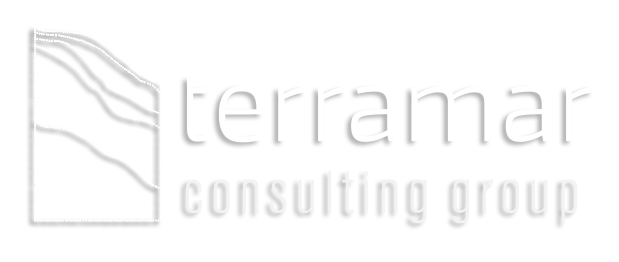In our musings on Challenge, Collaboration & Changing the Way We Work, we laid out why Catalytic Collaboration is critical, cool, complex, … and downright sticky. But its one thing to talk about it, and another thing entirely to actually do it. So how do we actually get there? And why isn’t it happening more often?
Getting to Catalytic Collaboration: The Raw Ingredients
The recipe for Catalytic Collaboration requires a number of unique ingredients and careful attention to the preparation, sequencing, timing, and temperature of the creation. Archer & Cameron, in their influential book Collaborative Leadership, provide an excellent ‘shopping list’:
- Trust;
- Relationship (personal and collegial);
- A deeper understanding of ‘the other;’
- A commonly identified starting point: shared purpose or cohesive issue;
- An integrated, multifaceted campaign plan, with clear goals;
- Dedication to a collective vision that takes precedence over the personal or organizational;
- Commitment to experimentation and co-learning;
- Facilitative catalytic leadership;
- Perseverance for deep dialogue and equally deep listening;
- Committed resources;
- Time.
Optimizing Conditions & Obstacles
One of the elementary enabling conditions for collaboration is expectation of beneficial outcomes. The more significant the causal outcome, the greater the level of participation and depth of commitment among the group, and the greater the willingness to override individual needs for the sake of the collective. Translation: successful Catalytic Collaboration requires a shared vision, set of values, and strategic framework—and maybe most importantly, a commonly understood problem(s) linked to a commonly understood solution(s). Practitioners often speak of needing a ‘big opportunity’ or ‘big threat’ not only to ignite collaboration but also, and maybe more importantly, to generate sinew between vision, values, goals, and strategy.
Virtually every case study of effective collaboration points to the solidity of relationship, based on trust and shared history, as the most fundamentally important determinant of success. Collaboration does not just happen because it should or because it sounds good. Getting to Catalytic Collaboration requires time and resources; a commitment to building the space and process for seeds of collaboration to be scattered, take root, and for curiosity about the ‘other’ to grow. People need time to build and deepen relationships—to trust. They need time to learn and co-create shared goals and strategic approaches. Time liquefies organizational inertia, inspires new ideas, and overcomes the centrifugal force of entrenched ideologies and organizational systems.
Finally leadership, after trust, may be the single most important ingredient for successful collaboration. With collaborative leadership absent, organizations default to the most burning issue of the day. Moving toward Catalytic Collaboration does not just happen on its own. This type of collaboration requires a catalyst—a guide to pilot gulfs, cross boundaries, ensure that vital information is not lost in translation. “Collaboration needs a different kind of leadership; it needs leaders who can safeguard the process, facilitate interaction, and patiently deal with high levels of frustration” (Chrislip 2002).
Archer & Cameron in their book Collaborative Leadership: How to Succeed in an Interconnected World state: “Getting value from difference is at the heart of the collaborative leader’s task…”. The qualities and characteristics of catalytic leadership identified include:
- Energy, passion, optimism, and drive;
- Comfort sharing knowledge, power, and credit;
- Ability to manage the tension between delivering on outcomes and sustaining relationships;
- Courage to keep an eye on the prize;
- Ability to make the complicated simple;
- Willingness to take risks;
- Capacity to make ‘it’ personal and identify personal triggers that challenge or undermine collaboration;
- Facility with conflict and resolving it;
- Fluency in interpersonal skills such as empathy, patience, tenacity, coalition-building, inspiring and holding deep dialogue.
So, what gets in the way of collaboration or obstructs it? Issues and projects that groups easily coalesce around are hard to come by. Identifying unity of purpose is much easier when there is a ‘big threat’ hovering on the horizon catalyzing the collaboration and giving it value. With the low-hanging fruit picked and the noble fights fought, we spend most of our time in the trenches of social change defending small territorial gains, dueling it out mano-a-mano. In the quagmire, the work often doesn’t seem sexy; it lacks allure or luster. It is much more difficult to inspire collaboration when playing defense or looking for tactical synergies as compared to the loftier realm of a designing and implementing a big vision for a big win.
Furthermore, it is in the trenches that the idiosyncrasies of strategies and tactics reveal themselves and can create irreconcilable differences. Disagreements are common at the strategic level and it is often challenging to mesh differences. This is especially the case if a group is large or diverse. And finally, and most obviously, without the raw ingredients or optimizing conditions in place, Catalytic Collaboration is next to impossible.
Take the Leap
So, some scary stuff for sure, but also some scary big promise. So please, please dig in, dig deep. Let’s embrace our inner wisdom and courage, quiet the voices of doubt, hold hands—and leap. For Catalytic Collaboration is noble work—work the world desperately needs. I can’t promise it will be easy but what of value ever comes without the sting of gritty devotion, the burn of fiery passion, or the tears of tenacity?

